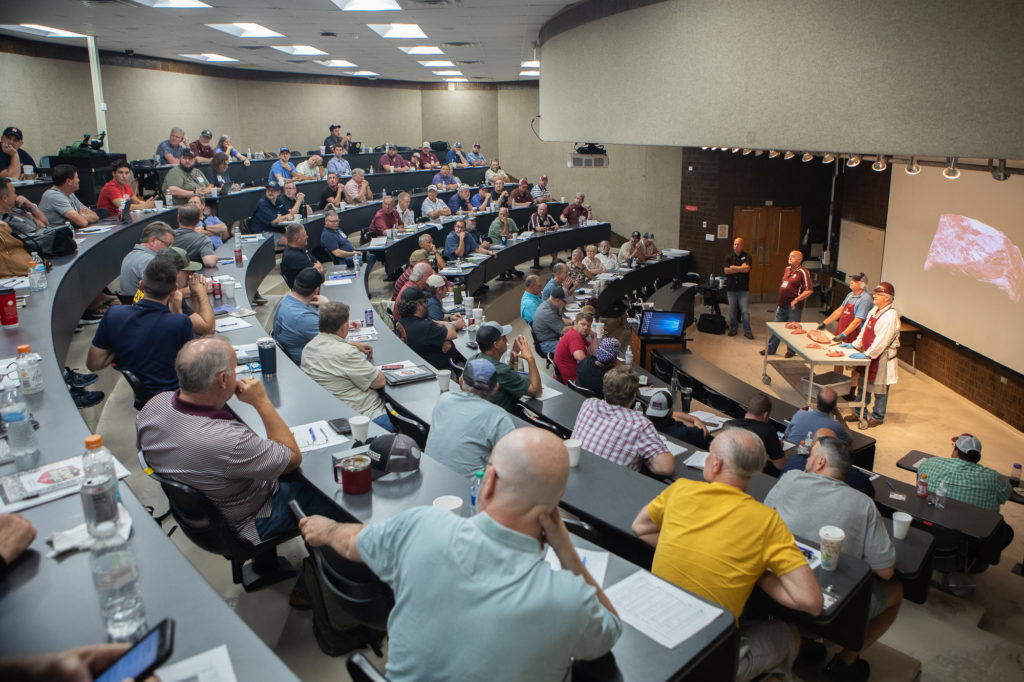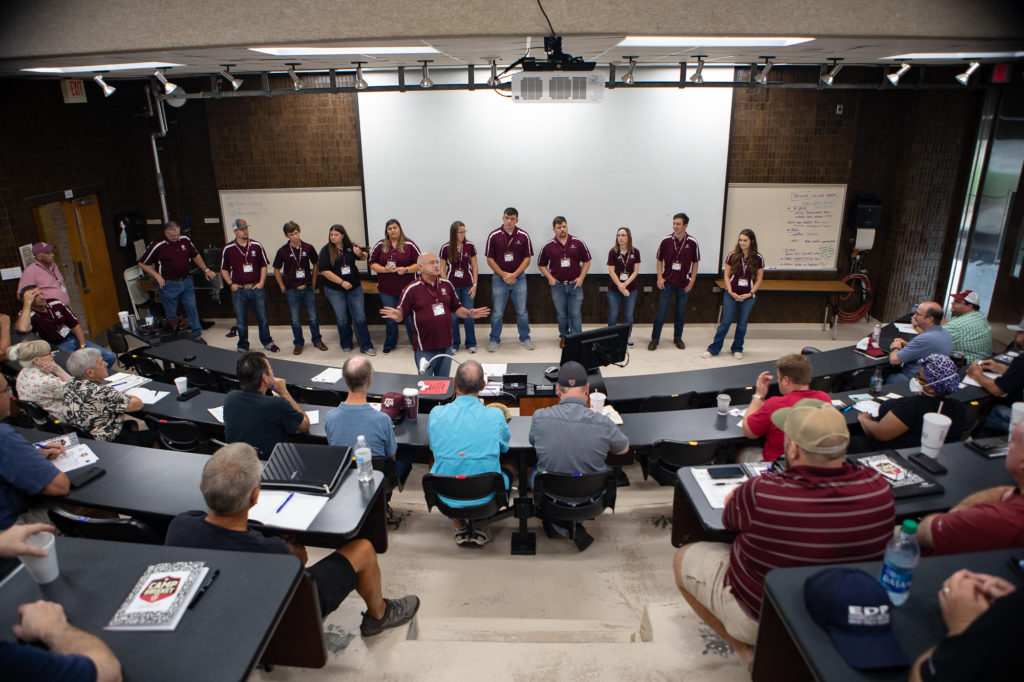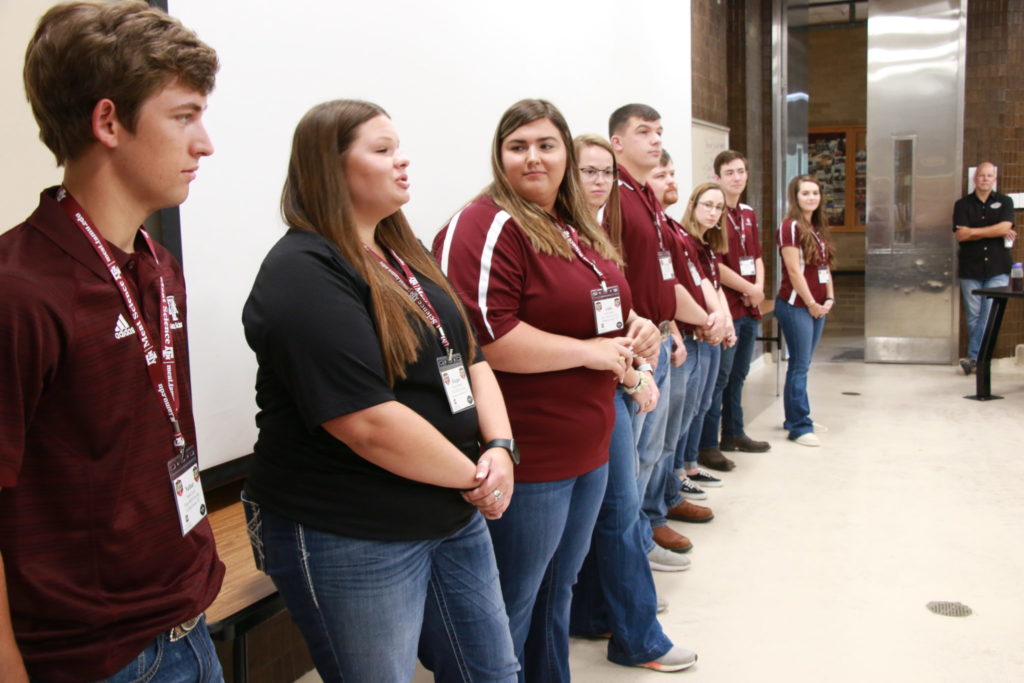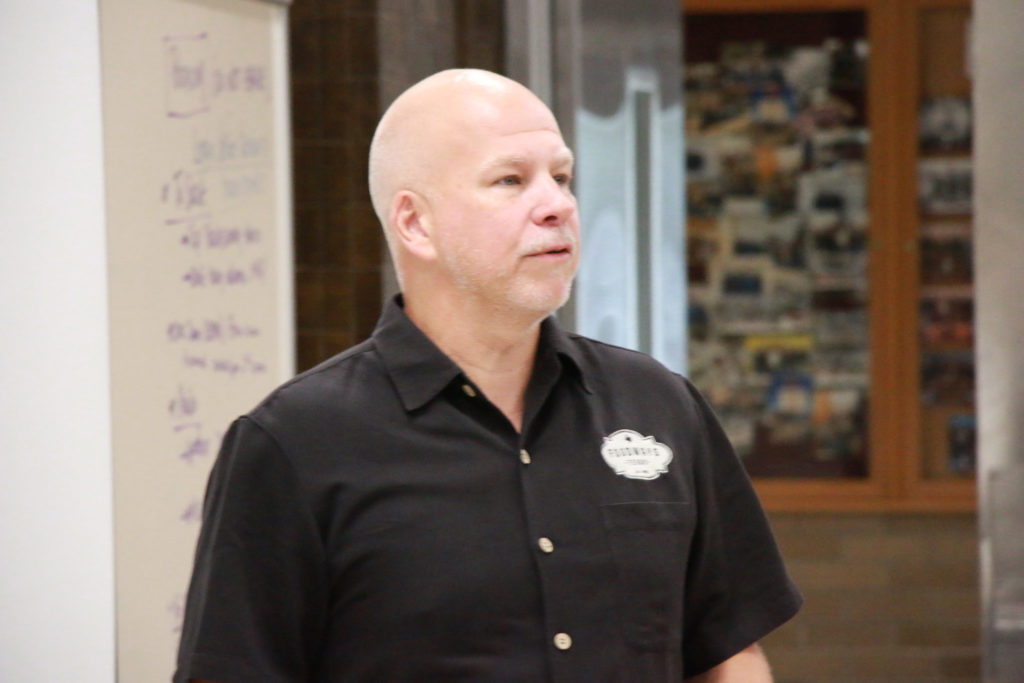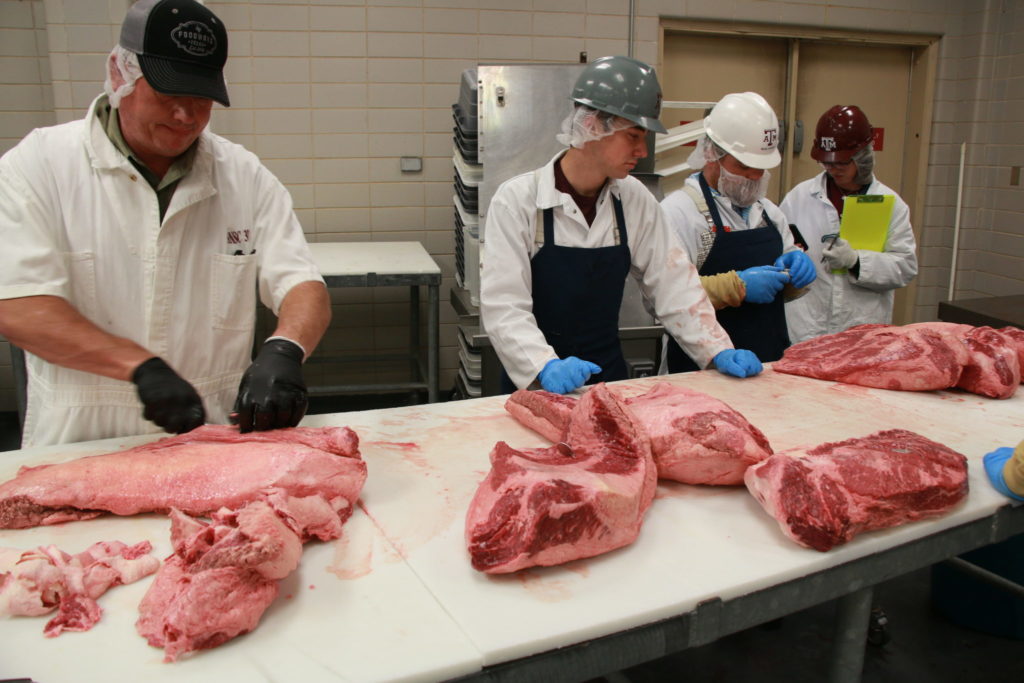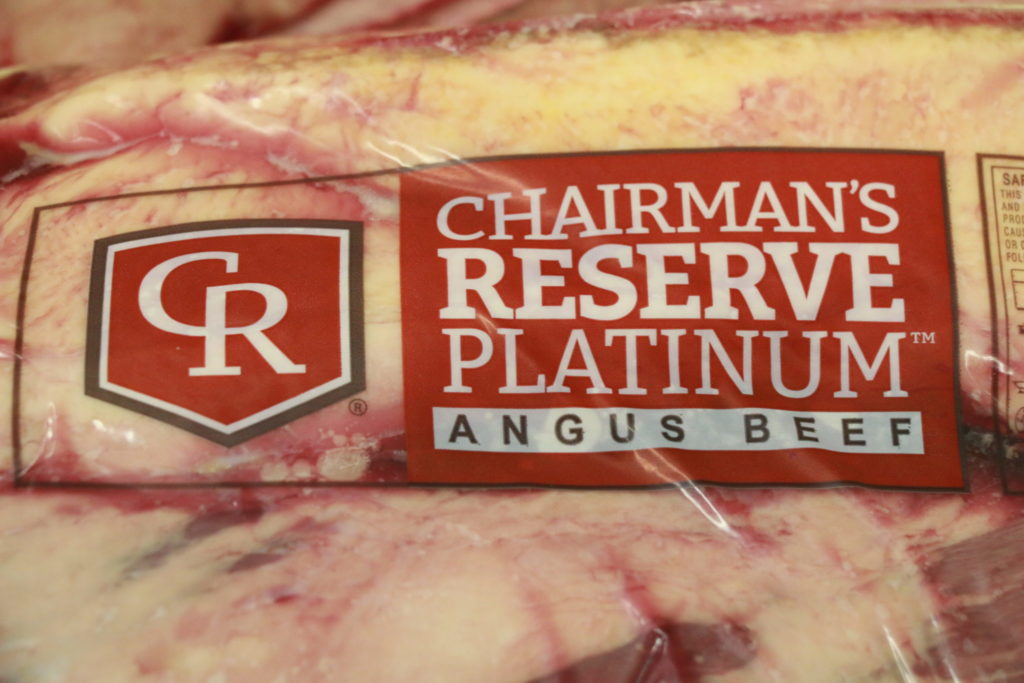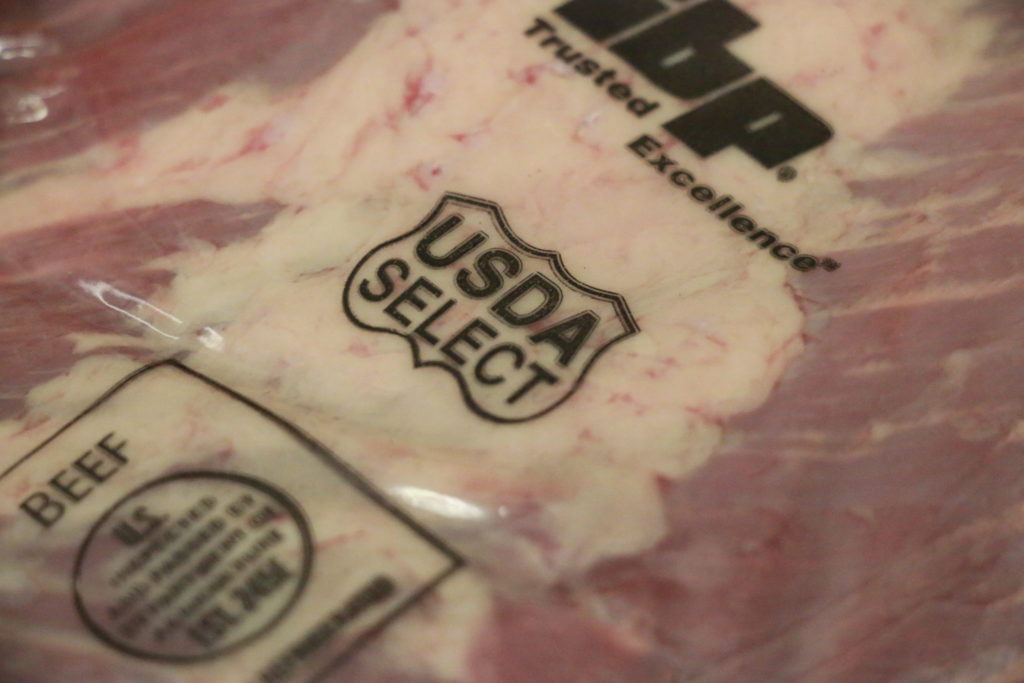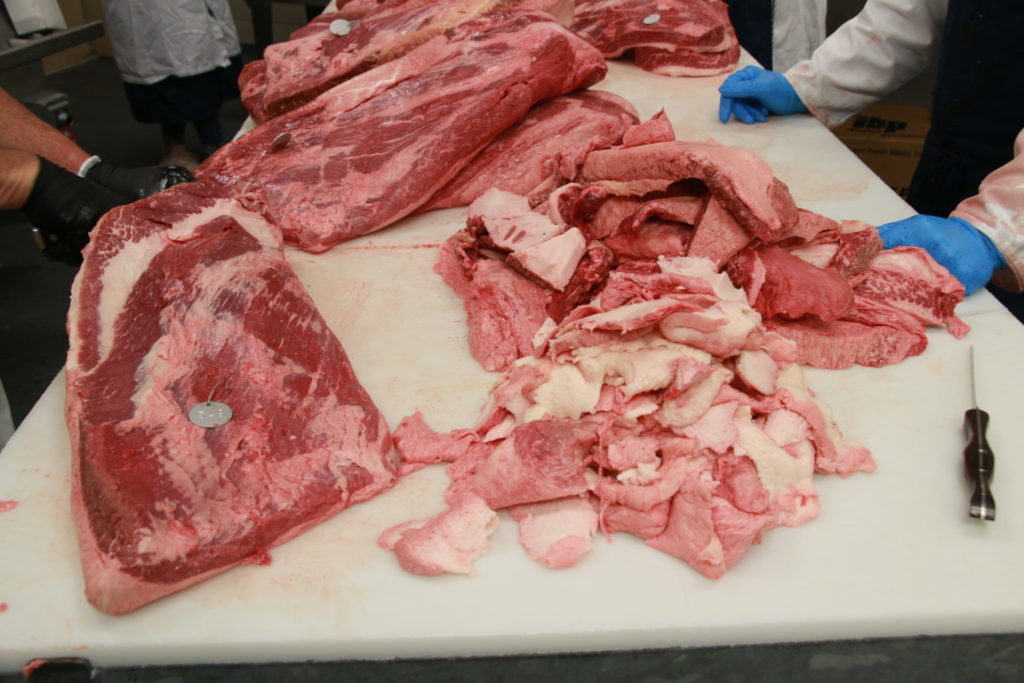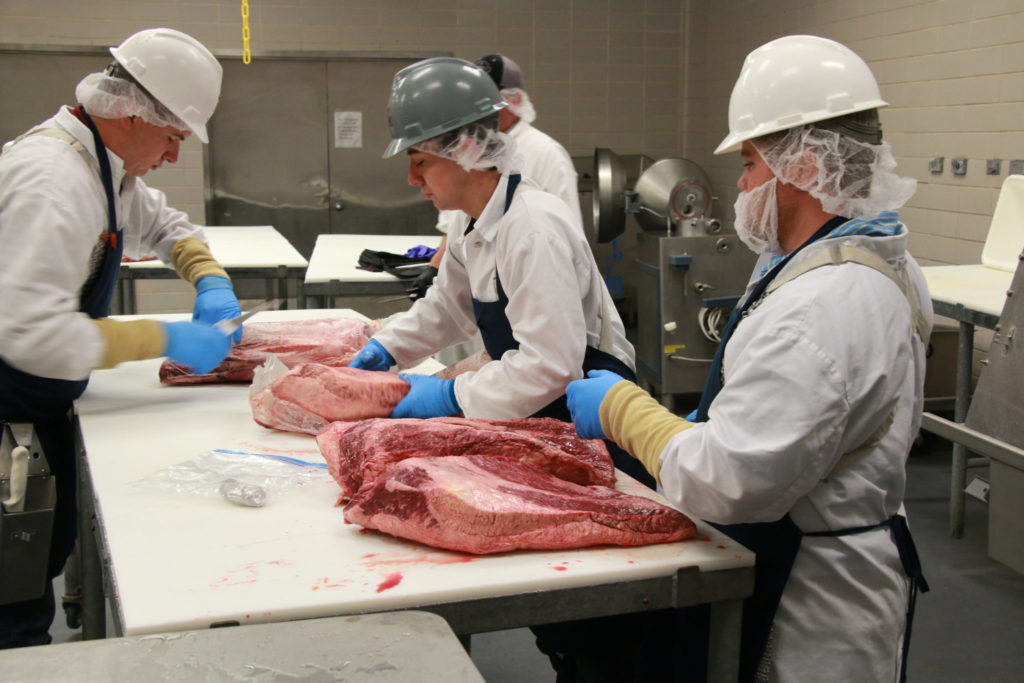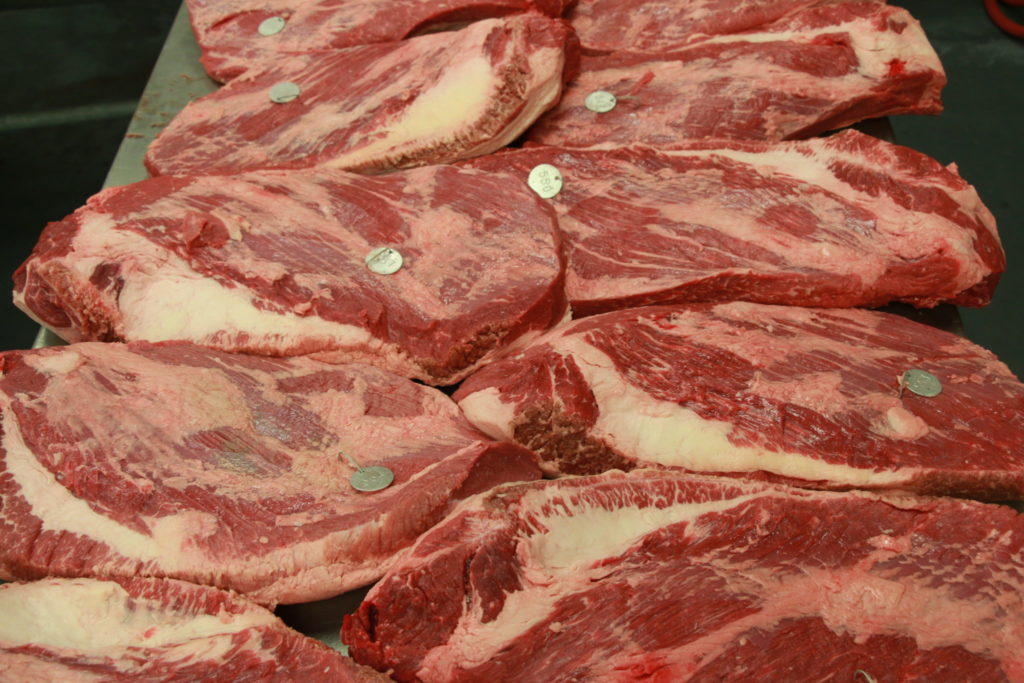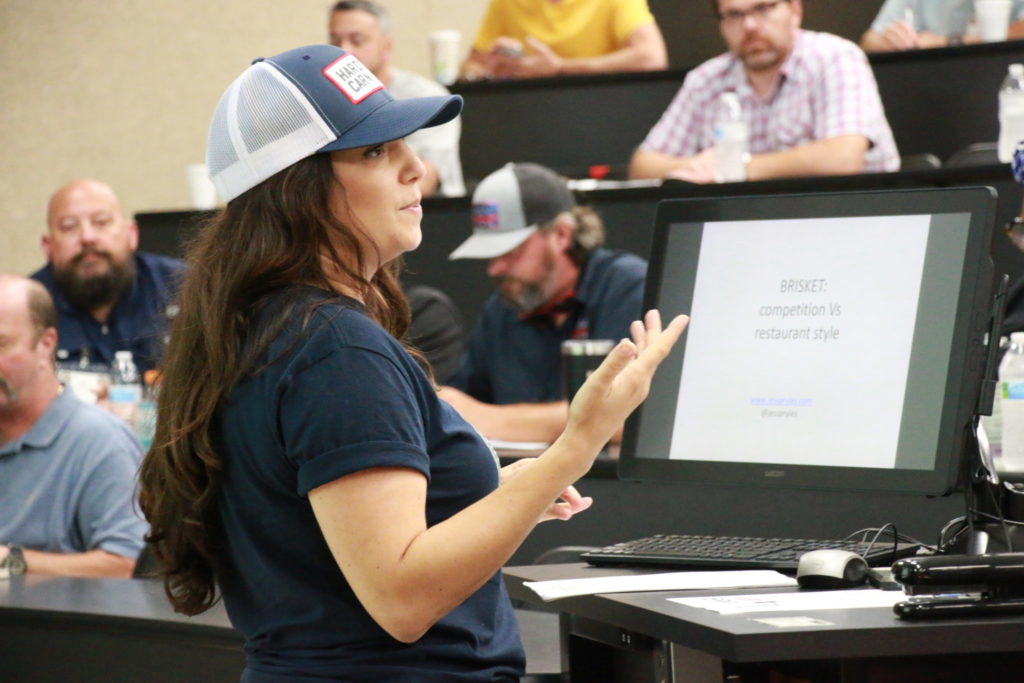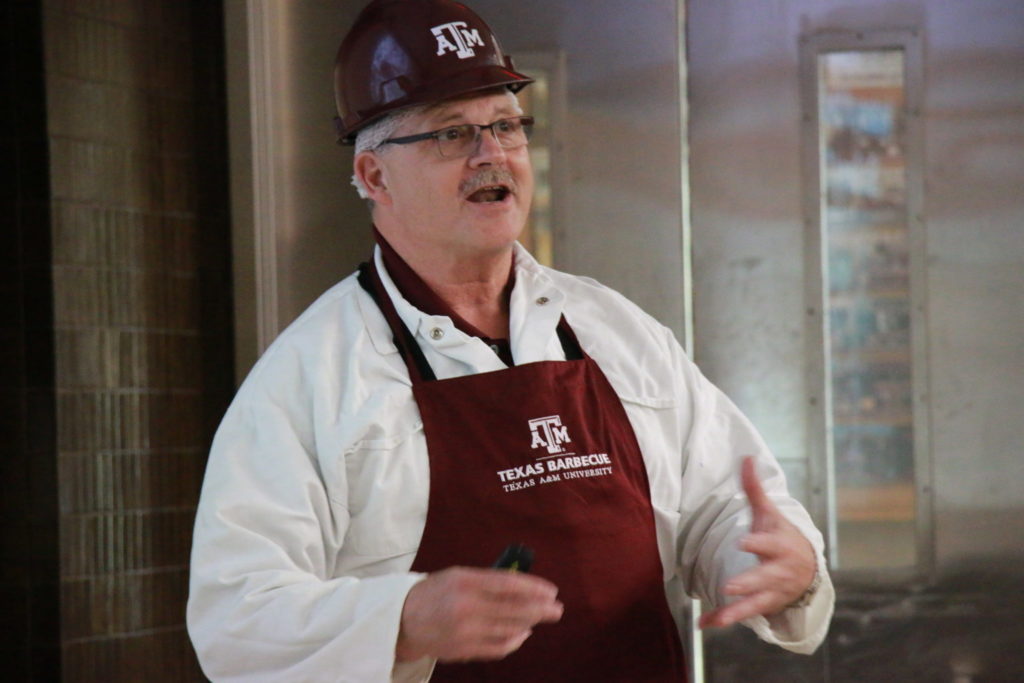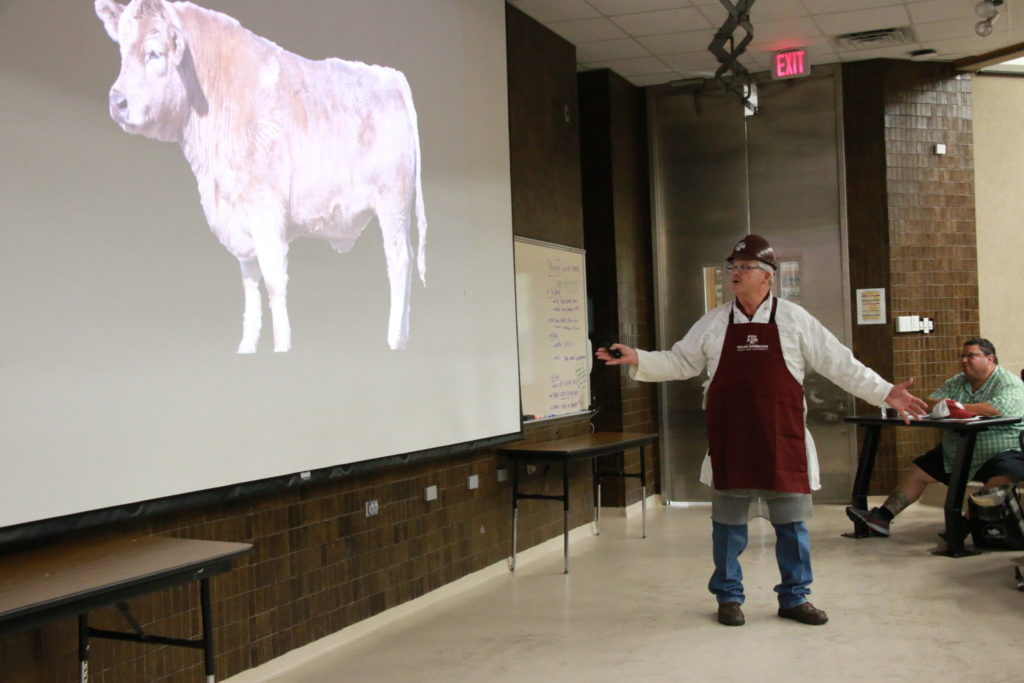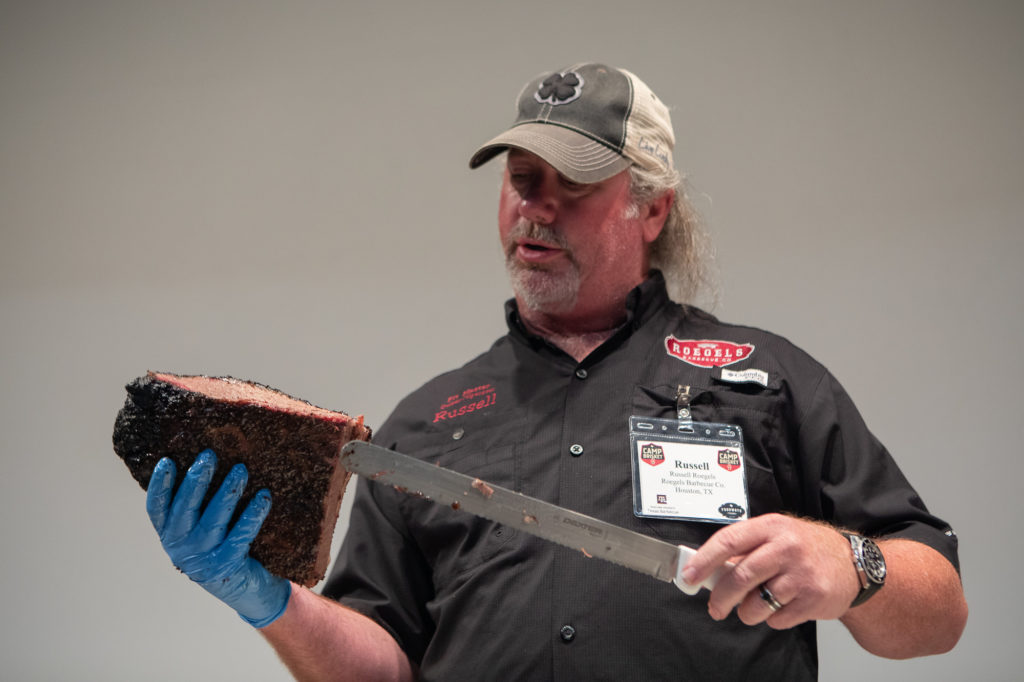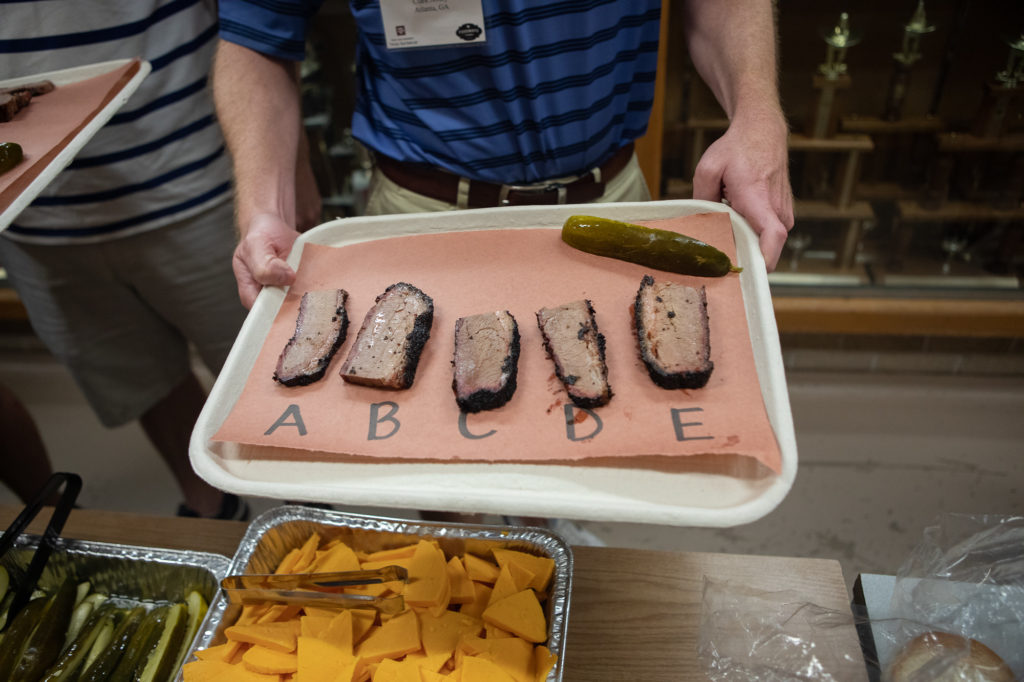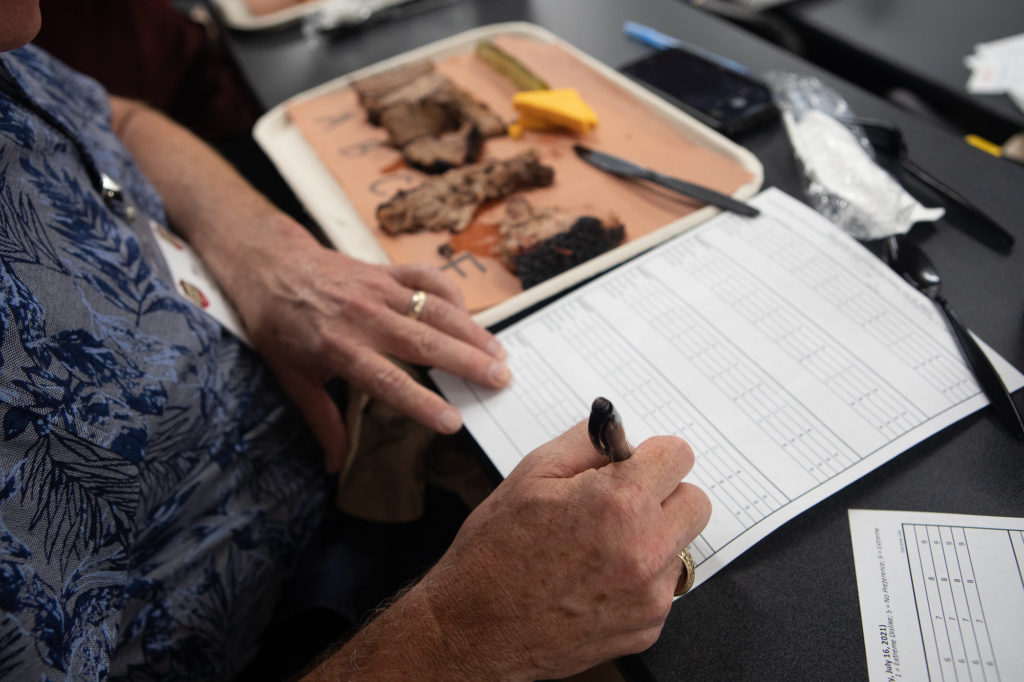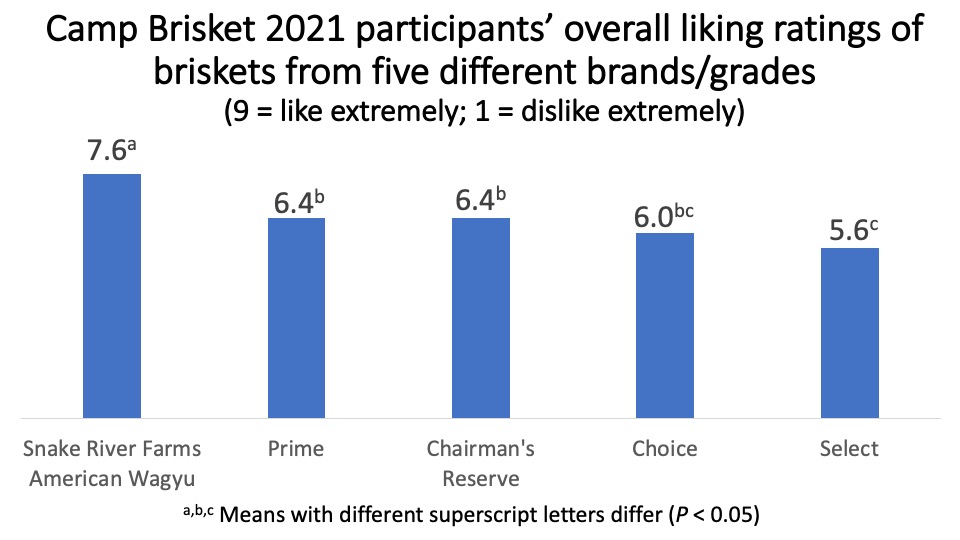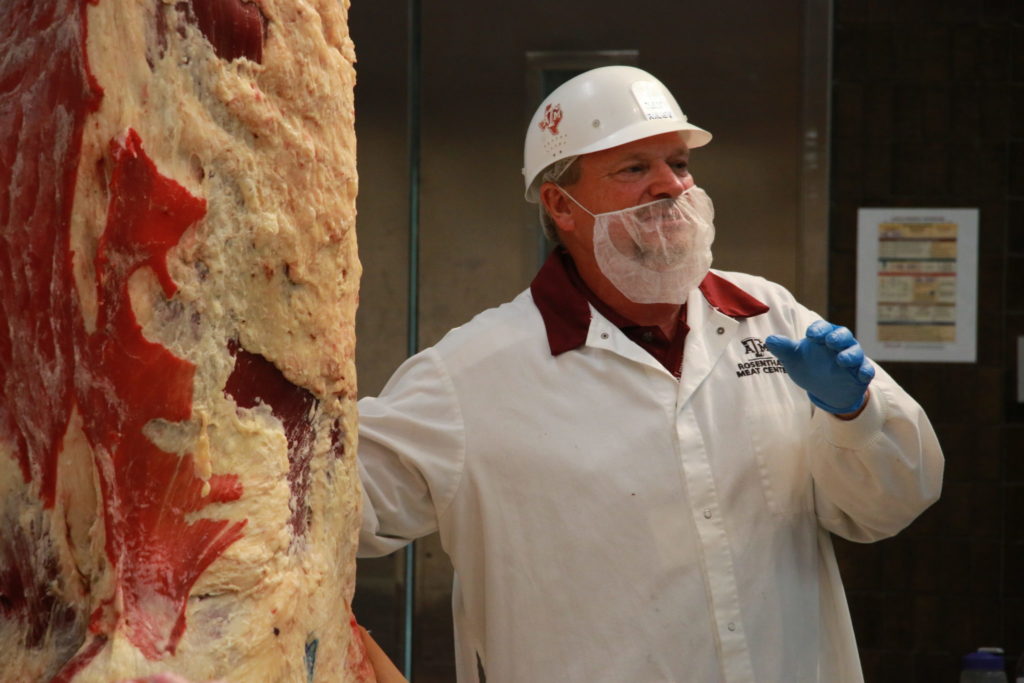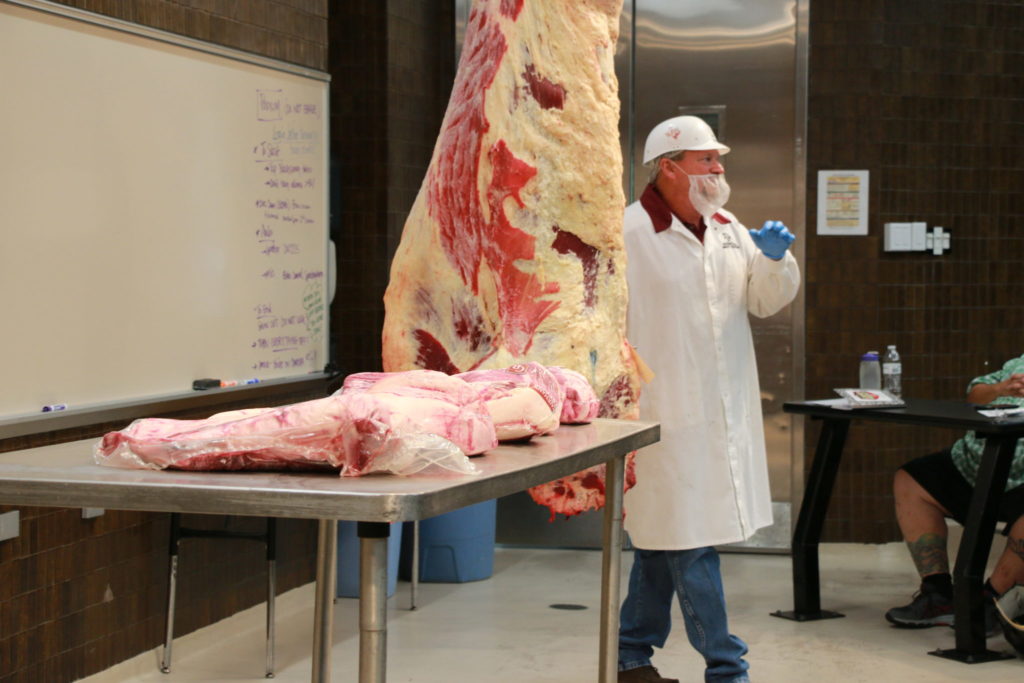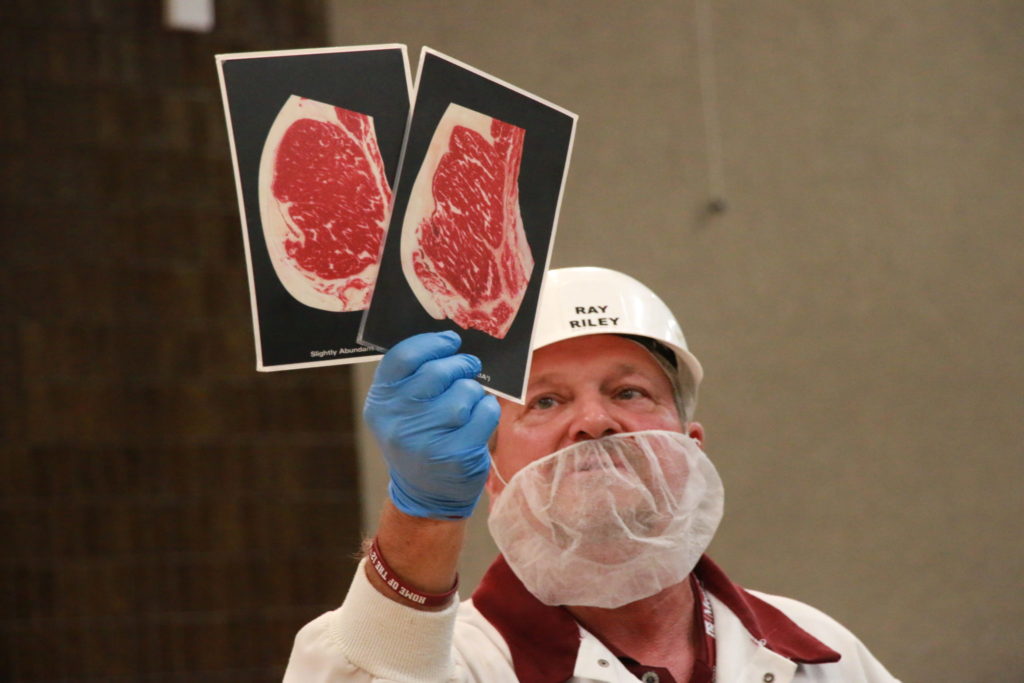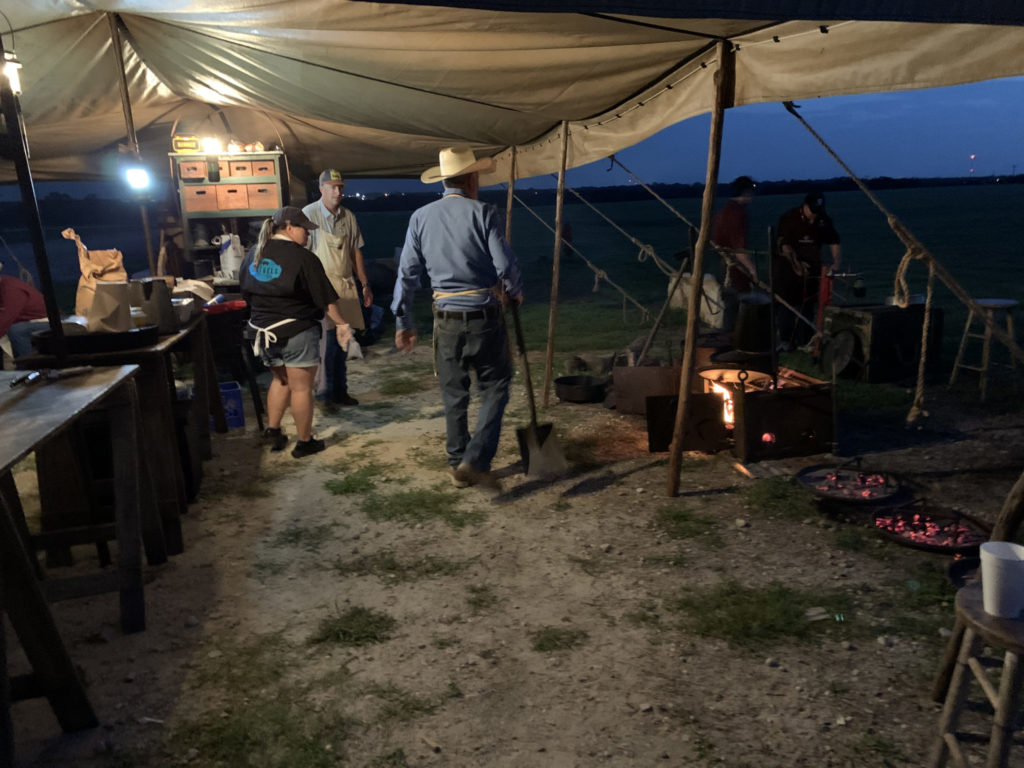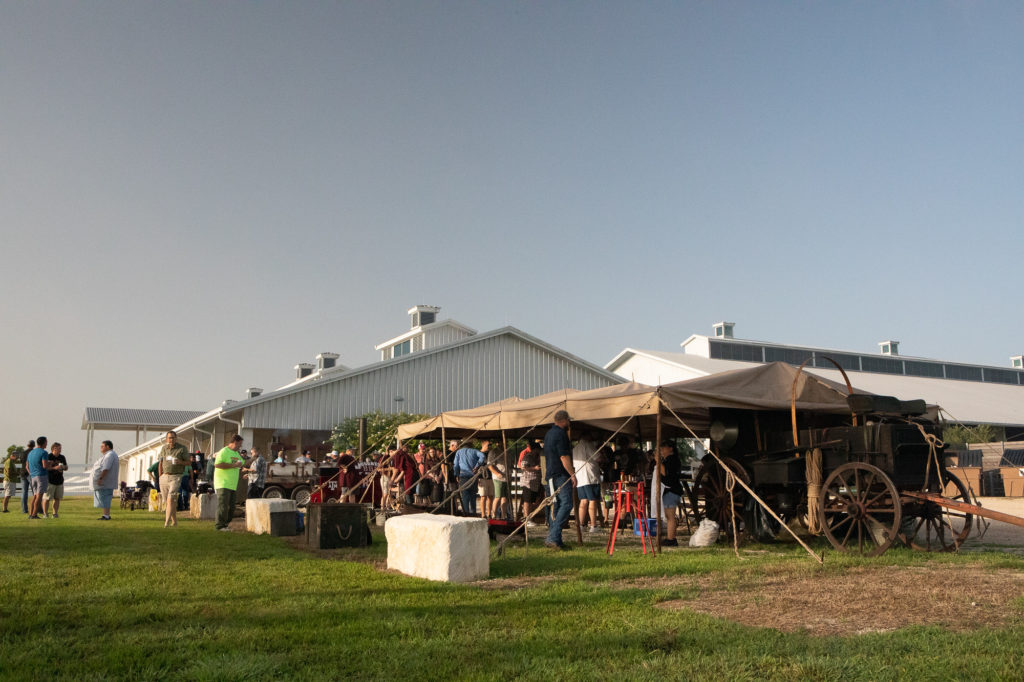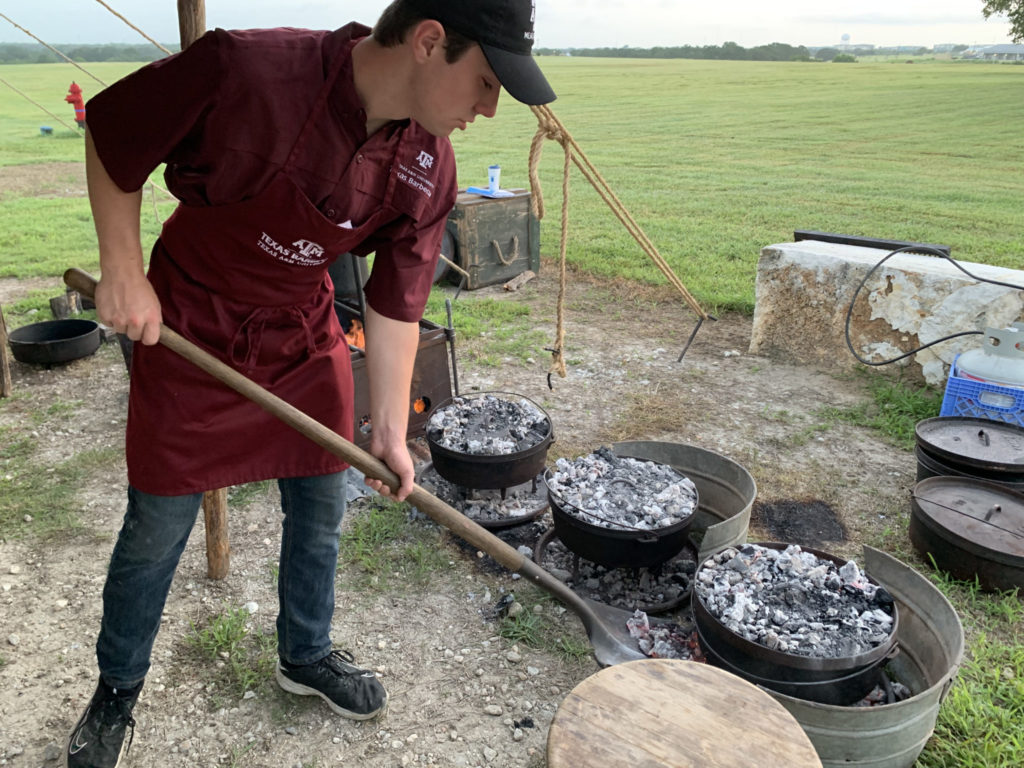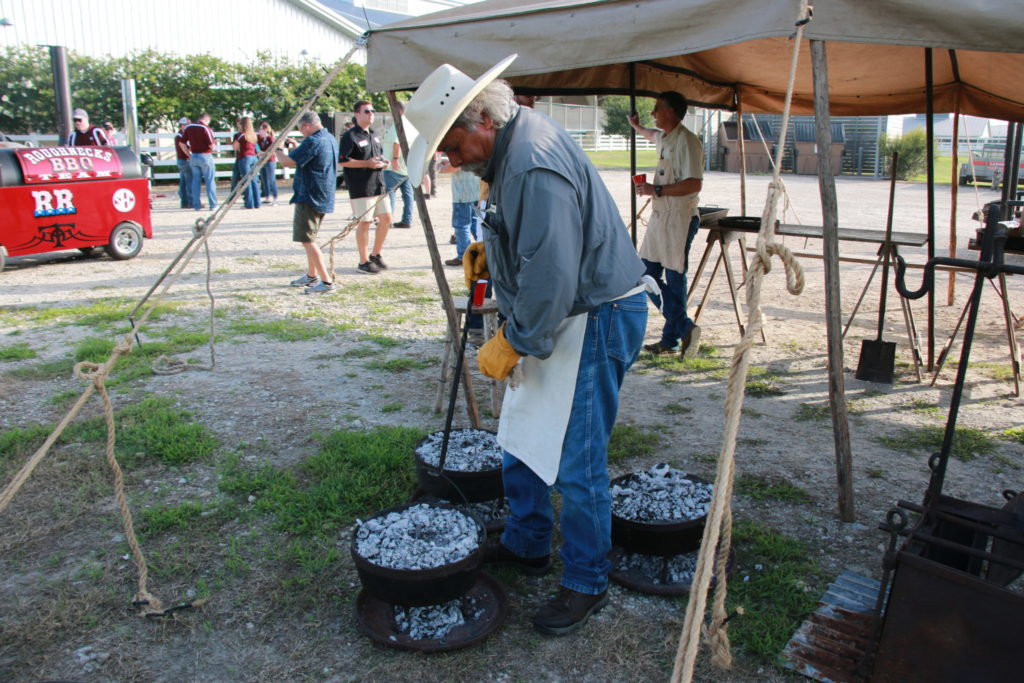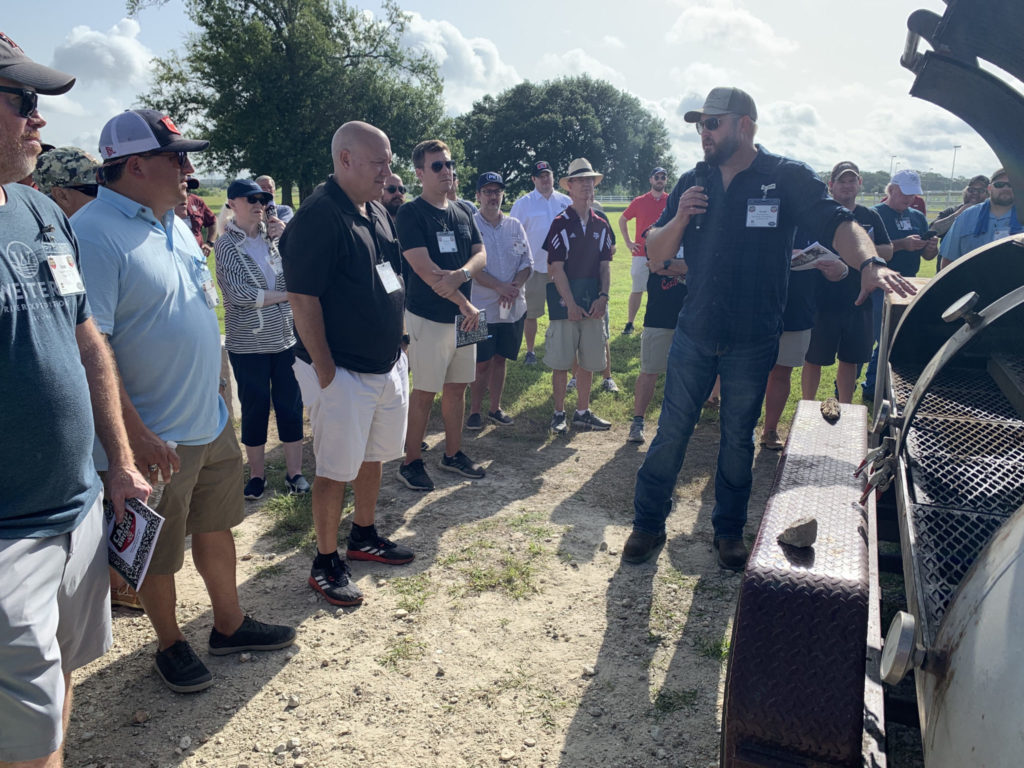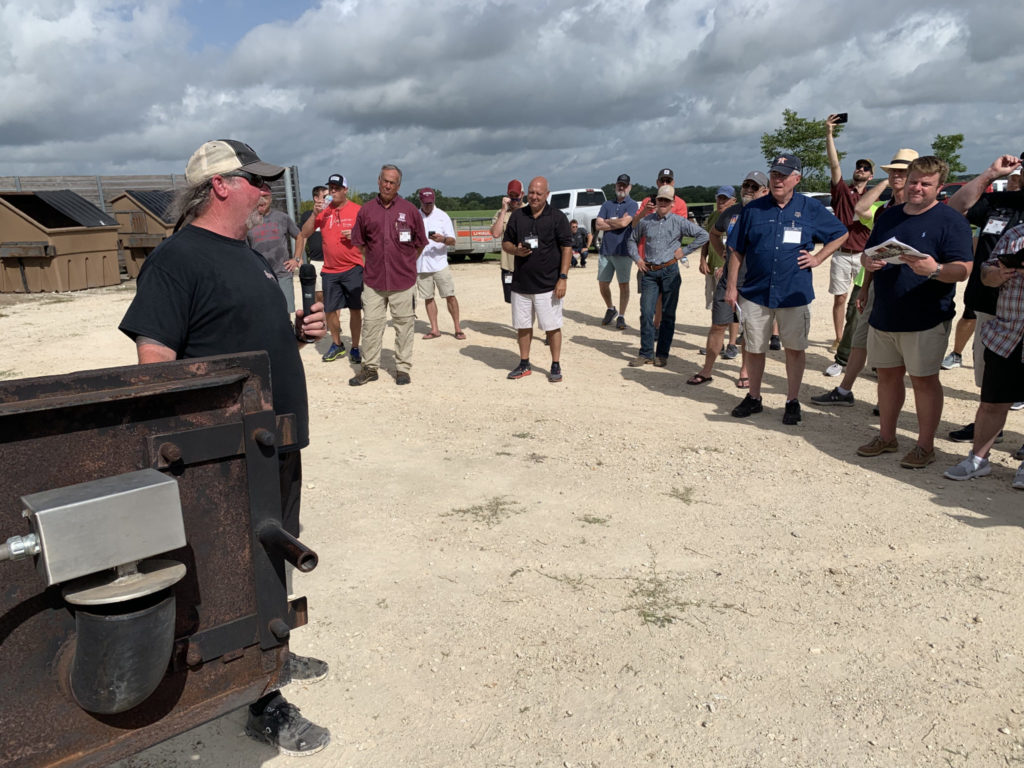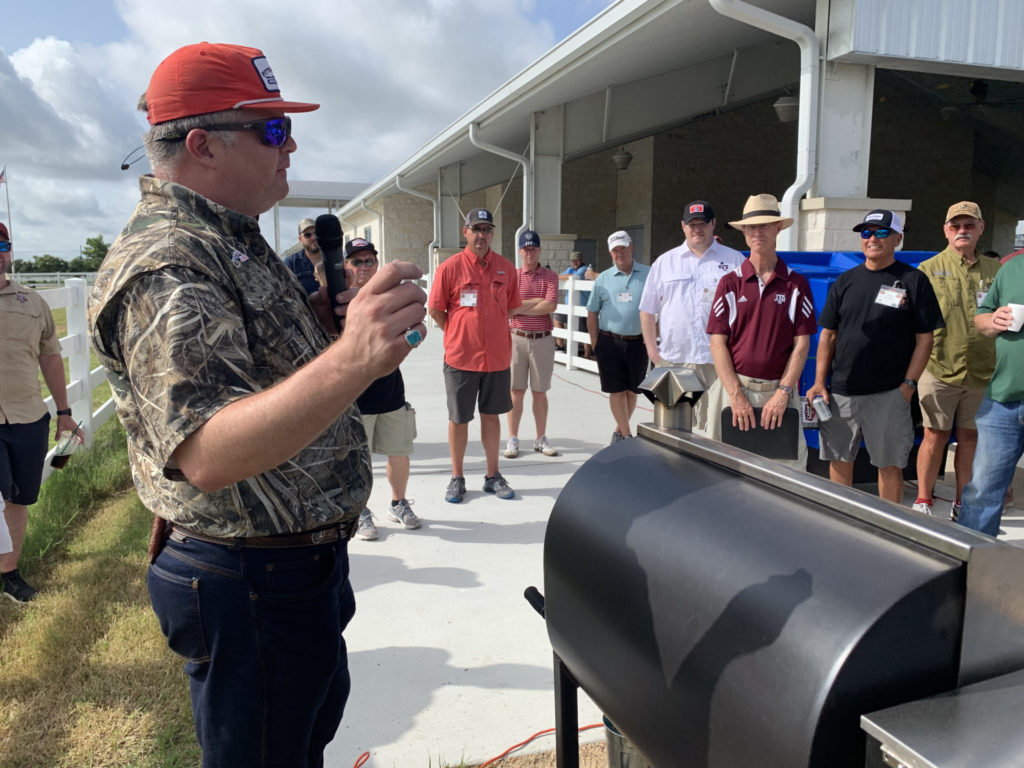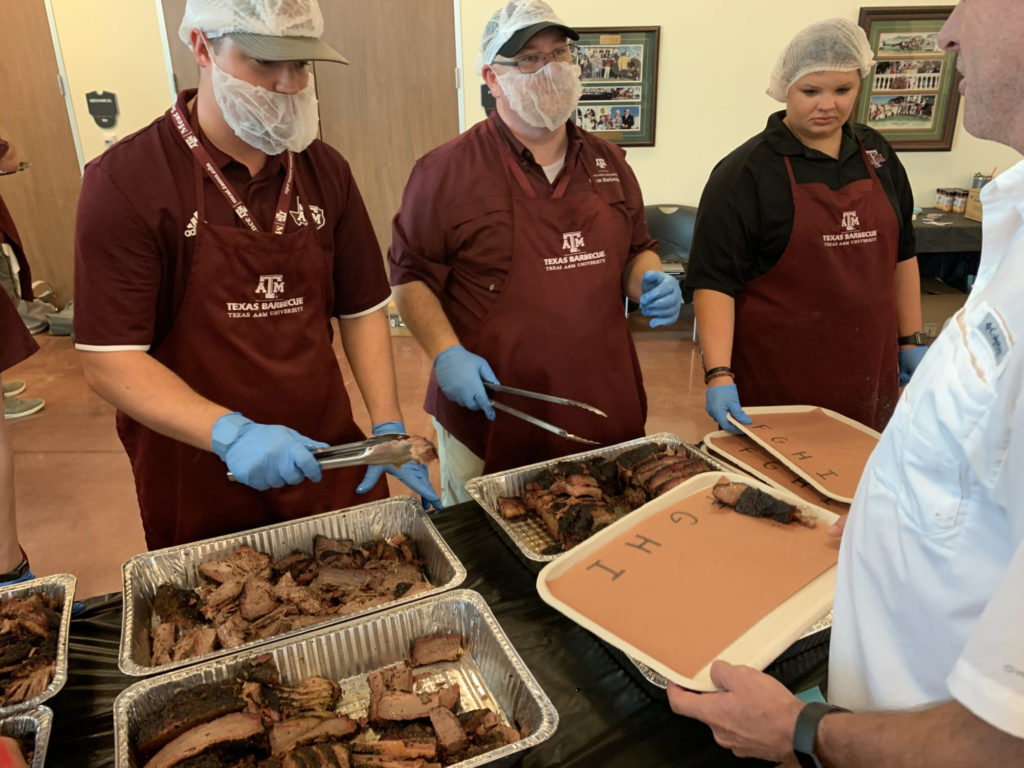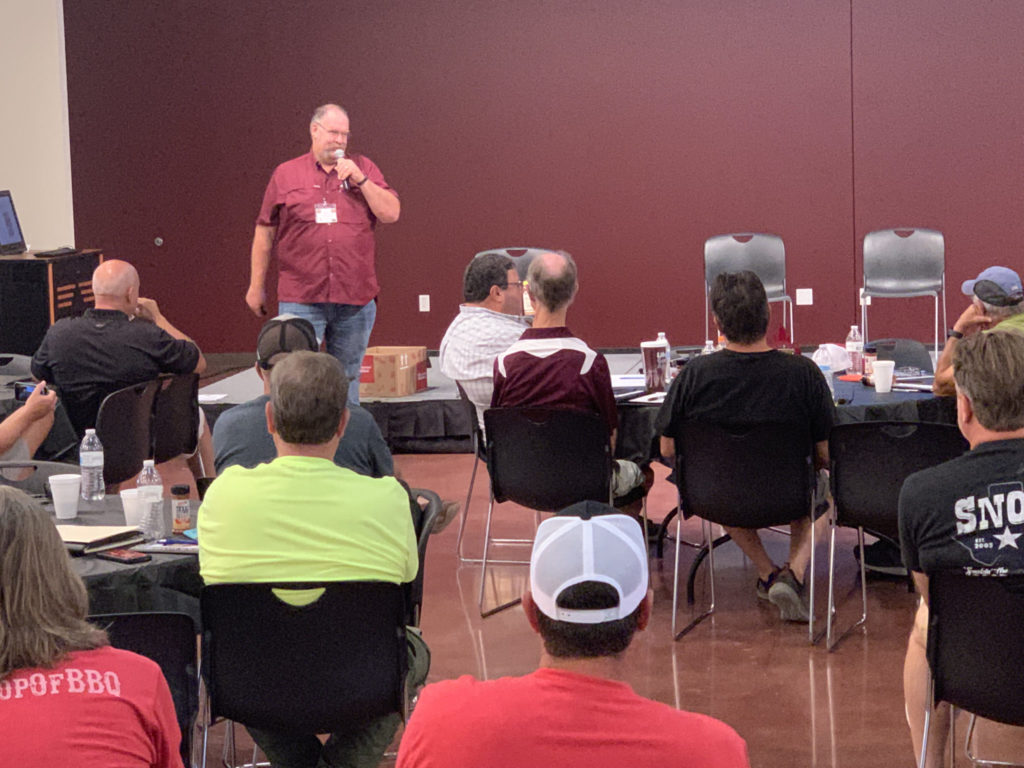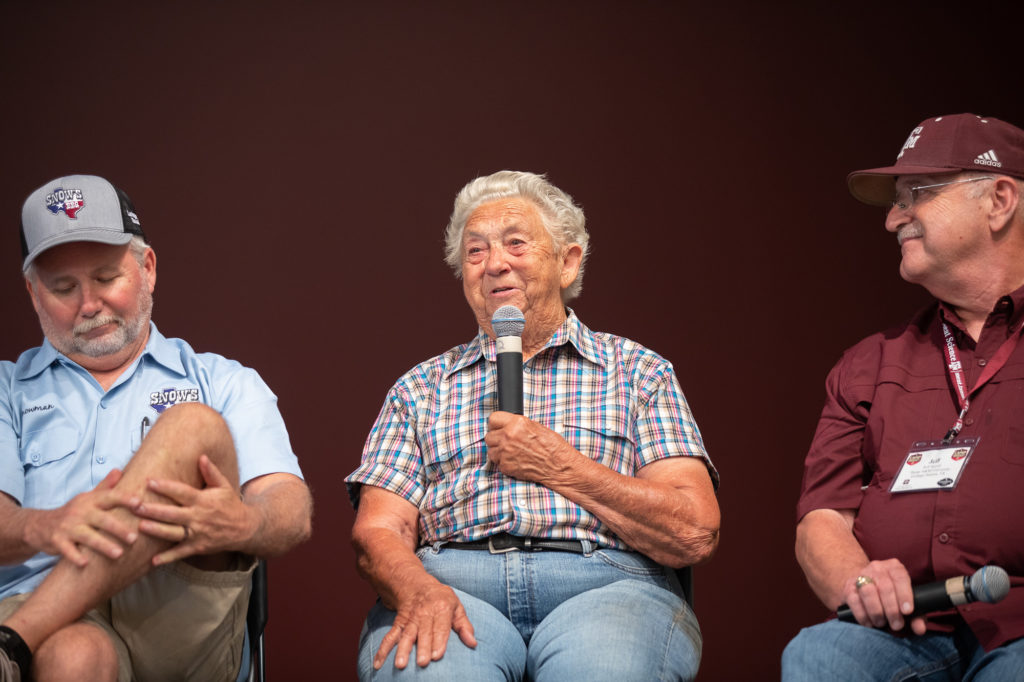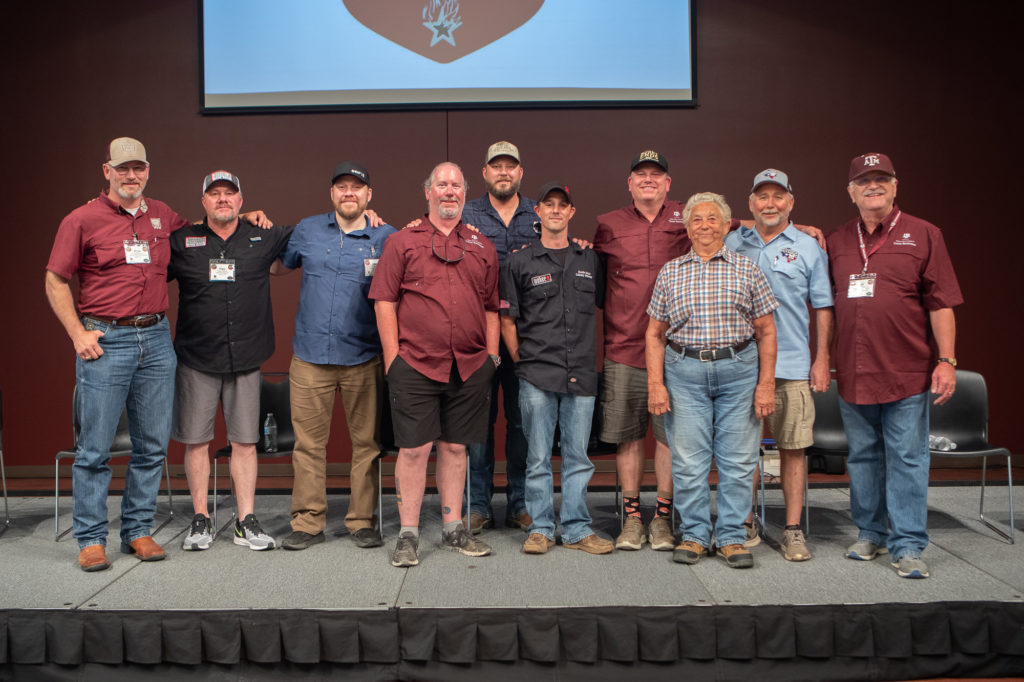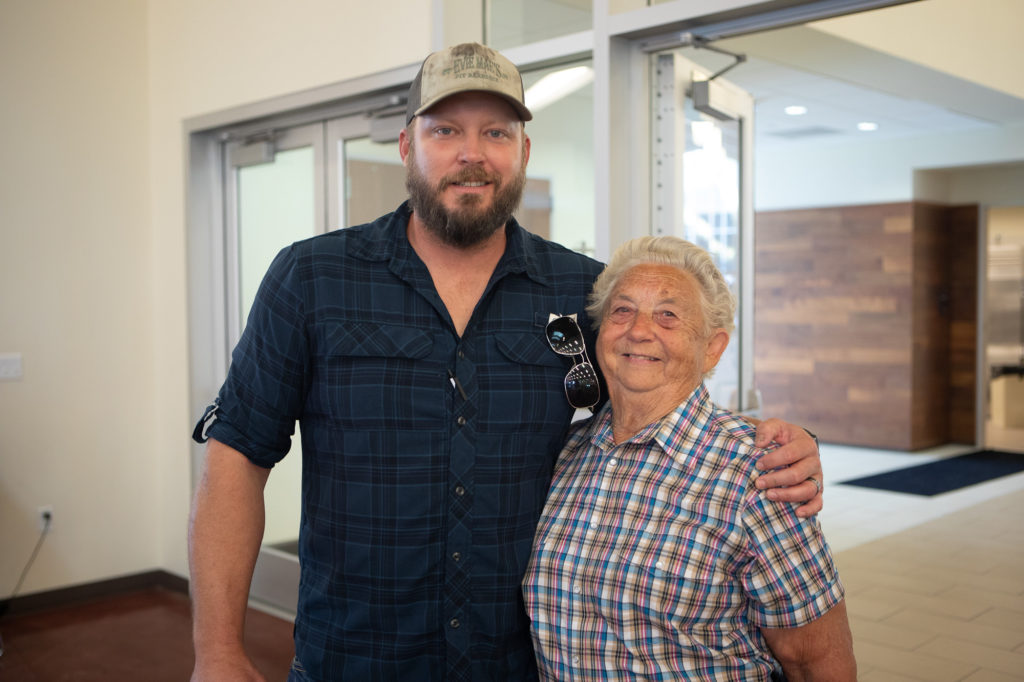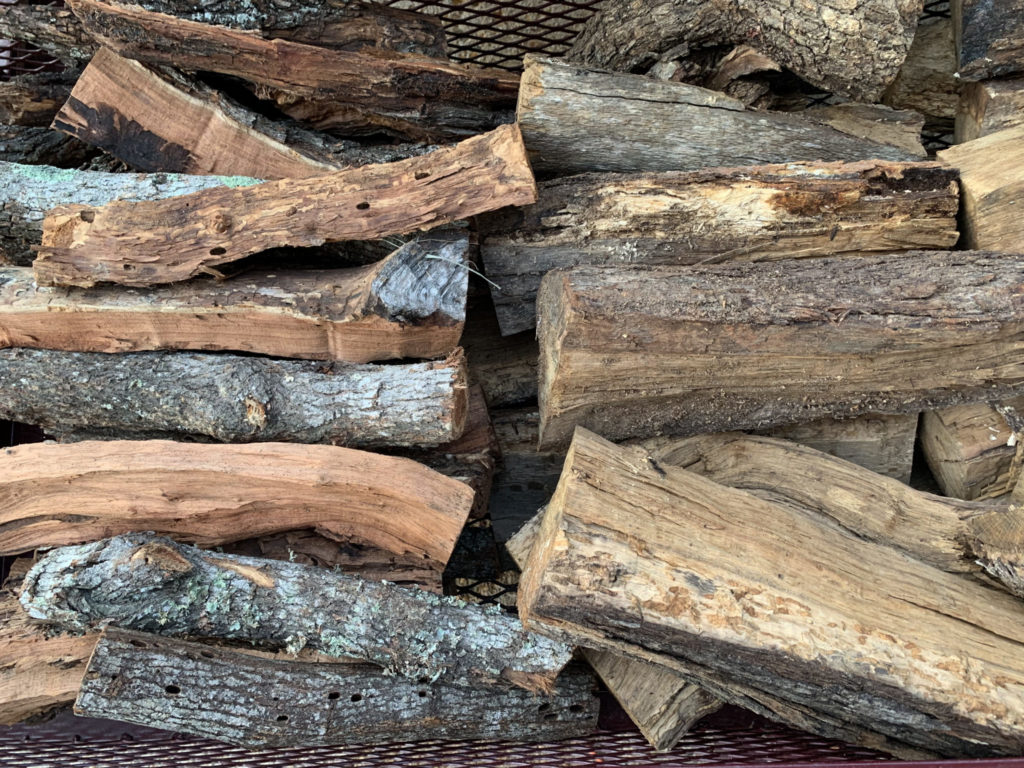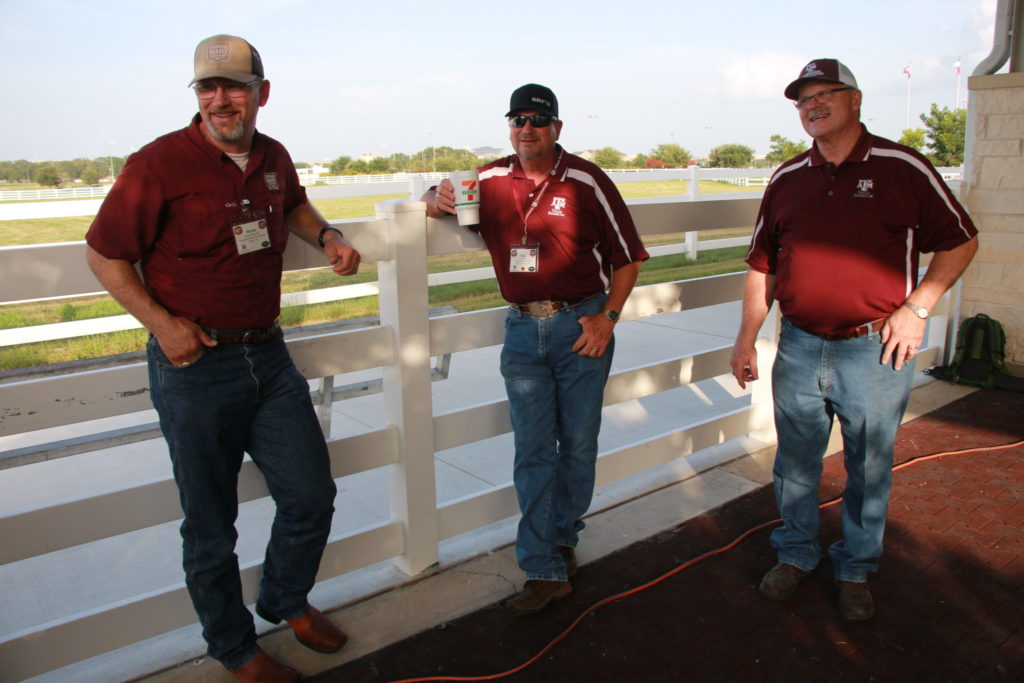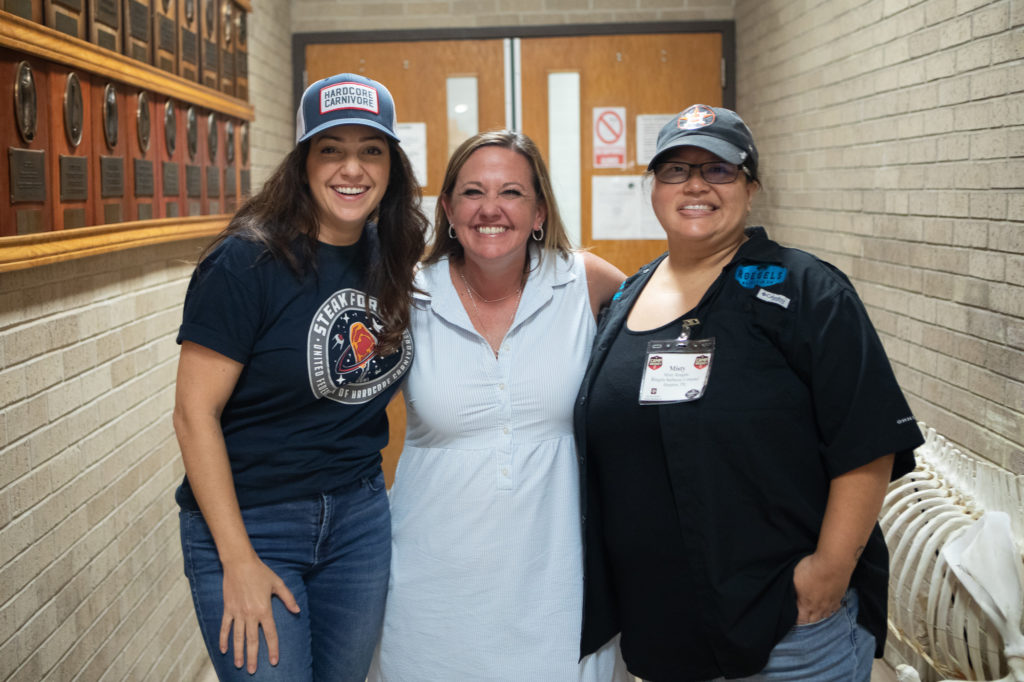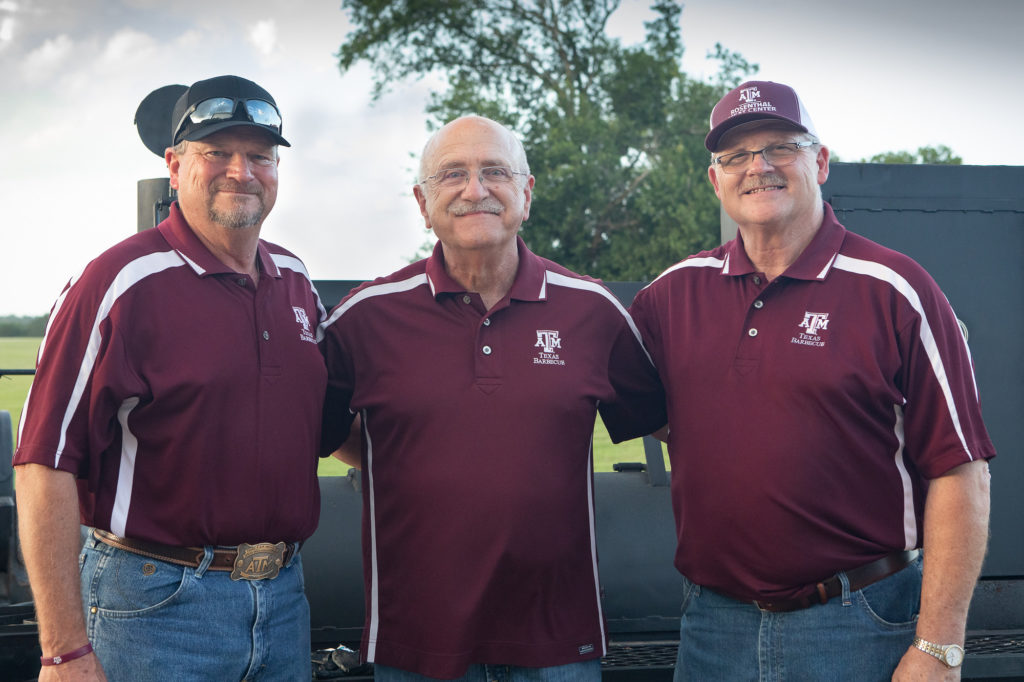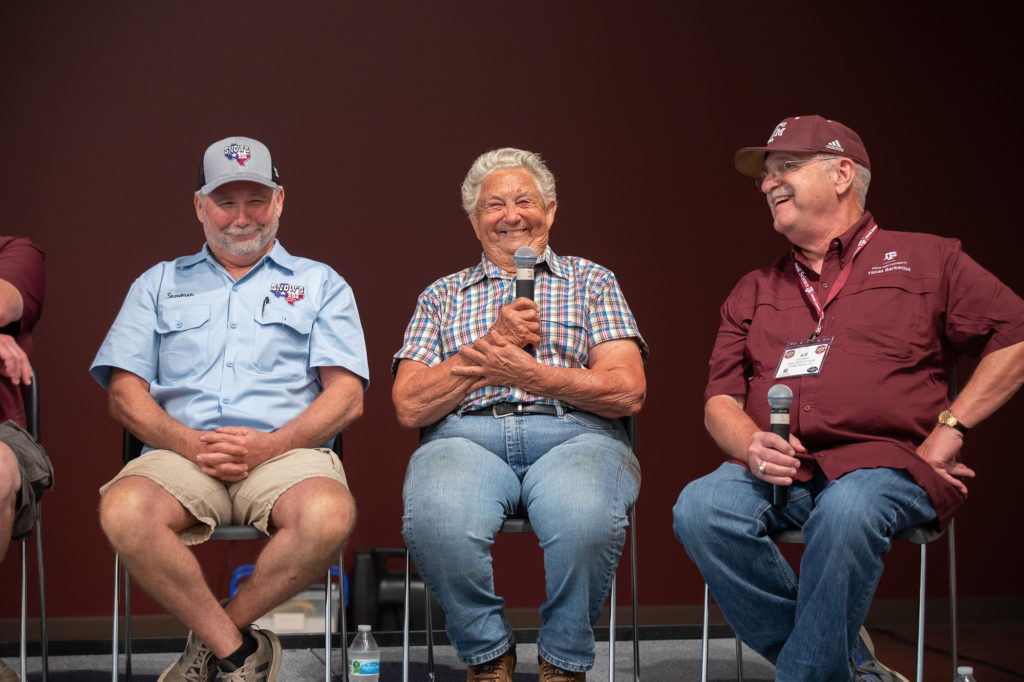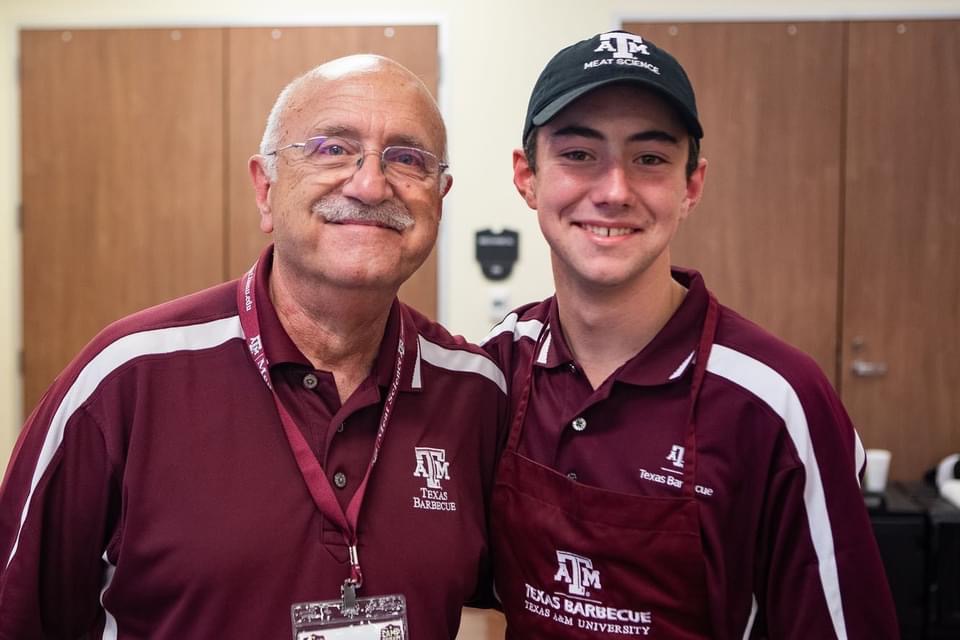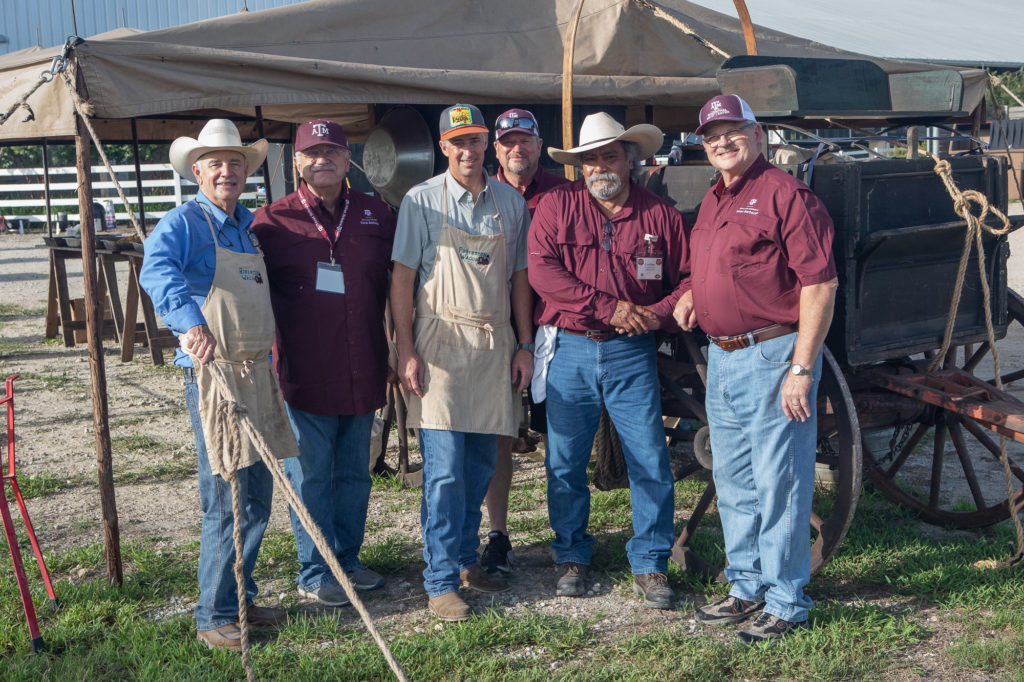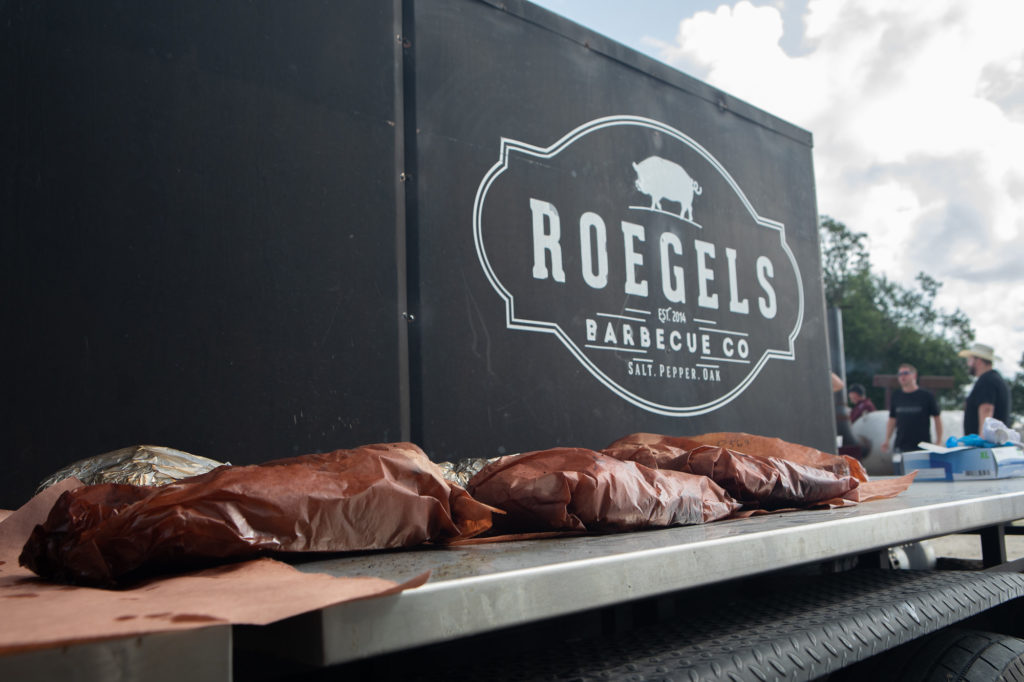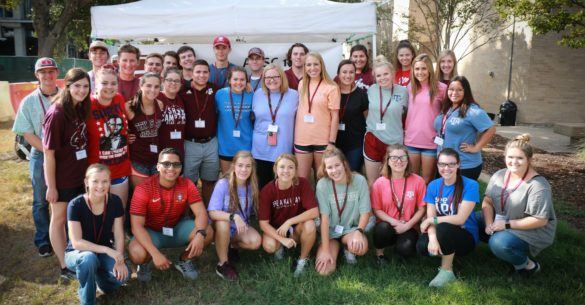The ninth Camp Brisket, a joint venture between Foodways Texas and the Meat Science program of the Department of Animal Science at Texas A&M University, was held on July 16-17 , 2021 at the Rosenthal Meat Center and the Thomas G. Hildebrand, ’56 DVM Equine Complex. About 100 participants embarked on a journey to learn more about the ultimate challenge preparing that most difficult dish of Texas Barbecue cuisine, the brisket. Camp Brisket was postponed from its usual January date because of COVID-19, and fortunately, it was able to be held in its usual manner.
This year’s Camp Brisket was coordinated by Texas A&M University meat science educators, Davey Griffin, Ray Riley, and Jeff Savell, and who were assisted by graduate students and undergraduate students including Sydni Borders, Cassie Brown, Mason Holmes, Rebecca Kemp, Thachary Mayer, Addie Rankin, Trent Schwartz, Reagan Wagner, and Paige Williams. Special thanks to Thomas Larriviere, McKinney, Texas and to Nathan Kerth, College Station High School, College Station, Texas, and Jackson Larriviere, Rock Hill High School, Frisco, Texas for their help in conducting the camp. These great folks ensured that the needs of the briskets, pitmasters, and guests were attended to through the camp.
Marvin Bendele, Foodways Texas, welcomed the participants to Camp Brisket. Greetings and introductions are part of the beginning of each Camp Brisket. Getting to know each other is one way to create community that is so important when we conduct these workshops. With each camp, this process takes longer, but we know that many people enjoyed getting to know who all was there.
Special thanks to Kelly Yandell for her assistance in capturing the events of the camp through her photography and for being there to visit with everyone helping them feel a special part of the program. Kelly has been a valuable part of Foodways Texas, and she brings such an energy to everything she does.
Brisket procurement and trimming
Before Camp Brisket starts, work begins on procuring the briskets representing different types and grades, trimming them, and applying the salt/pepper seasoning (we used a half and half mix by volume of Kosher salt and course ground pepper with 3/4 cup applied to each brisket). John Brotherton, Brotherton’s Black Iron Barbecue, led the brisket trimming and seasoning effort.
Brisket use and anatomy
The first talks were by Jess Pryles, cook, writer, and TV personality, on the difference between restaurant and competition brisket, and Davey Griffin, on the anatomy and trimming of a brisket. John Brotherton joined Davey in showing the participants how he trims briskets before cooking.
Cooked brisket slicing
Russell Roegels, Roegels Barbecue, and Jeff Savell talked about and demonstrated proper cooked brisket slicing.
Tasting different grades of brisket
The first tasting test we did was for different grades of brisket. We obtained five different grades/types of briskets for use in this demonstration: Snake River Farms’s American Wagyu, Prime, Tyson’s Chairman’s Reserve, Choice, and Select. These briskets and the remaining ones used for the camp were trimmed to have no more than about 1/4 inch of fat remaining anywhere. Each brisket was seasoned with 3/4-cup of a half and half mixture (by volume) of Kosher salt and restaurant-style coarse-ground black pepper. The briskets for the grade/type demonstration were cooked on Russell Roegels of Roegels Barbecue pit with John Brotherton of Brotherton’s Black Iron Barbecue managing the cooking cycle. We used oak logs as the source of heat and smoke.
Each grade/type of brisket was sliced so that each participant received a lean portion to rate on a ballot. When completed, the ballots were tabulated by the students to determine whether the participants could tell the difference in the grades or types of brisket. The winner? The Snake River Farms’ American Wagyu won, with Prime and Chairman’s Reserve being rated higher than Select. Each year, this taste comparison usually results in Prime and Wagyu near the top and Select being near the bottom in ratings. There are perceivable differences in eating quality among different grades and types of briskets, and those interested in producing the best cooked briskets possible need to be aware of this.
Beef grading discussion
Ray Riley gave a beef grading demonstration talking about the USDA beef grades so that the participants would know more about the various labels and brands associated with the meat they purchase.
Wood and Smoke panel
There was a Wood and Smoke panel in the afternoon featuring Dr. Nick Nickelson and Joe Riscky, The Meat Board; Homer Robertson, World Champion Chuck Wagon competitor and Fort Worth Fire Department leader; Bryan Bracewell, Southside Market and Barbeque; Chris Kerth, Department of Animal Science, Texas A&M University, and Jeff Savell. Post oak is the featured wood for Texas Barbecue based on its abundance and how the smoke complements beef. The panel discussed the topic of using properly seasoned wood to smoke with and how important it was to getting a clean fire that imparts the good aspects of the smoke onto the product. The positives and negatives of the other woods most commonly used in smoking — hickory, mesquite, and pecan — were discussed.
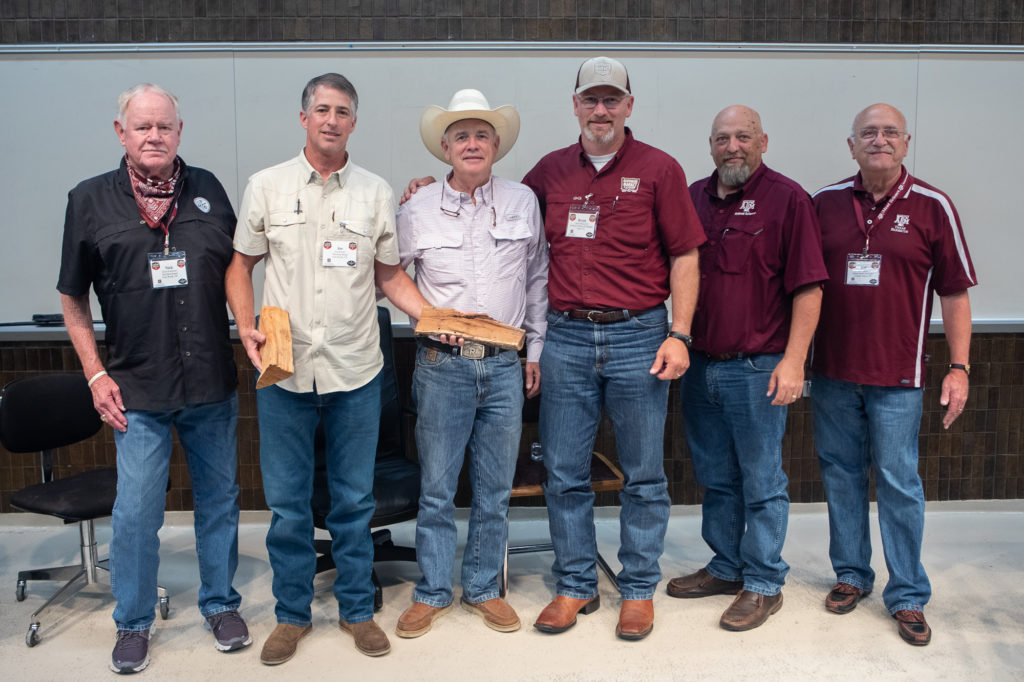
Nick Nickelson, Joe Riscky, Homer Robertson, Bryan Bracewell, Chris Kerth, and Jeff Savell, Wood and Smoke Panel (photo by Kelly Yandell)
Friday night dinner
We moved to the Hildebrand Equine Complex for the rest of the program. We were blessed to have food from two groups involved with dinner that night. Hutchins Barbeque, Frisco, Texas provided wonderful brisket, sausage, its famous Texas Twinkies, and sides, and with Homer Robertson, world champion chuck wagon competitor, provided bread pudding and apple crisp for the crowd. The food was enjoyed by all!
Overnight smoking at Camp Brisket
The next brisket comparison was to smoke briskets overnight using the four primary woods — oak, hickory, mesquite, and pecan. Multiple pits were used for the overnight cooking. We used Prime briskets, trimmed and seasoned as mentioned before, for the comparison, and briskets were put on the smokers Friday afternoon so that they would be ready to serve around lunch time on Saturday.
Chuck wagon breakfast and pit discussion
Saturday morning became a time for a great chuck wagon breakfast of biscuits and gravy and breakfast tacos made with sausage and brisket from Homer Robertson, JArthur Garcia, Joe Riscky, Misty Roegels, and some of the students. Thanks to everyone for such a great breakfast experience enjoying the chuck wagon breakfast.
Pit discussion
Participants had a chance to see the different types of pits that were used to cook with. In addition to the pitmasters who were in attendance for the camp, Coy Christoffel, Pitts and Spitts, and Dustin Green and Jason Pruitt, Weber-Stephen Products, LLC demonstrated various products from their companies.
Pit design and maintenance panel
A pit design and maintenance panel was composed of Arnis Robbins, Evie Mae’s BBQ; Dustin Green, Weber-Stephen Products, LLC; Bryan Bracewell, Southside Market and Barbeque; and Ryan Zboril, Pitts and Spitts; with Davey Griffin as the moderator. Each panelist added his own take on what types of pits/cookers they preferred and what they did to make sure they were used to their best ability.
Smoke tasting panel
Lunch that day was the tasting of the briskets prepared using the four different smokes — oak, hickory, mesquite, and pecan. Each participant received a small slice of brisket from each smoke and were asked to rate it on 9-point scales. Students tabulated the results, and there were no differences among the four woods for sensory panel ratings. In 2019, participants found no differences in preference for the four different smokes used. Most other years, either oak or hickory wins this competition, but we are amazed that there are really few differences in how the participants rate these briskets cooked with different woods/smokes.
Seasonings and barbecue science
Ryan Heger, Adams Extract and Seasoning, spent some time going over different seasonings outside of the normal use of salt and pepper. Jeff Savell discussed some of the science behind meat and barbecue and fielded questions from the crowd regarding a wide array of topics.
One of the topics was whether postmortem aging was necessary for Texas-style briskets. Our works shows that postmortem aging does not improve tenderness of briskets.
Life as a pitmaster panel
One of the most highly regarded parts of Camp Brisket is the final panel, moderated by Jeff Savell, which featured Arnis Robbins; Bryan Bracewell; Russell Roegels; John Brotherton; Dustin Green; Tim Hutchins; Trey Hutchins; and Kerry Bexley and Tootsie Tomanetz, Snow’s BBQ The title of the panel was “Life as a Pitmaster,” and it gave each person a time to reflect on their path to where they are now, the challenges and opportunities they each face, and why in this crazy world of barbecue, they love this business so much.
Kerry Bexley and Tootsie Tomanetz from Snow’s BBQ came to the camp after finishing serving on their restaurant on Saturday morning. The number of people who got in line to take photos with Miss Tootsie shows how much she is revered as the Queen of Texas Barbecue!
Send off meal
The final meal was a comparison of wrapped versus unwrapped briskets. We did not conduct another taste test as most participants are facing “brisket fatigue” at this point, and are ready for something fairly light as they depart.
We end Camp Brisket for this year and know that many people from all walks of life have come together to bond over barbecue in general, but with the common goal of how to tackle the challenge that is the brisket! Thanks for Misty Roegels and Debra Reardon for coming to the camp along with their husbands.

